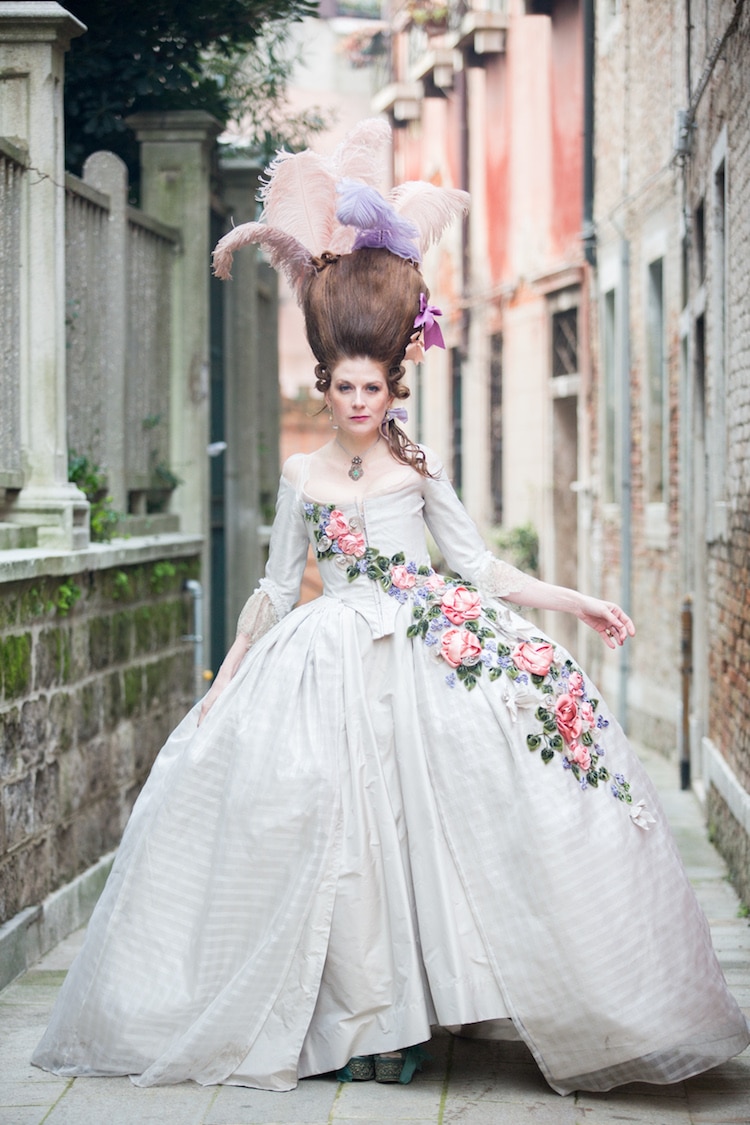
Photo: Phillip Van Nostrand
The human race hasn’t quite figured out time travel—yet—but people are finding other ways to explore alternate eras of existence. One approach is through historical dresses, in which an individual dons the garments that people from a particular time period would wear. Lauren Rossi is one of the best at this; she’s passionate about “very slow fashion” and uses her clothing construction know-how and deep love for the past to create custom outfits from the 18th and 19th centuries. The results are a brilliant display of engineered clothing that’s impeccably modeled by Rossi herself.
Rossi is quick to say that she’s inspired by history, but not a recreationist. “Color, texture and ridiculously sumptuous fabrics inspire me,” she writes. “I love natural fabrics and hand-worked details.” In patterning and piecing together garments, it allows Rossi a hands-on approach to exploring one facet of the past. “You can learn quite a bit about the nature of women’s lives by studying how they dressed,” she tells My Modern Met in an email. But, Rossi isn’t afraid to insert facets of modernity when appropriate either. “My panniers (hoops) are made with built-in hinges,” she explains, “so I can pack them up for travel or fold them up to sit in a modern car or chair.”
We had the pleasure of speaking to Rossi about her unique take on the history of fashion, as well as what it’s like to venture into the modern world wearing such fancy clothes. Read our exclusive interview, below.
Lauren Rossi explores the past—particularly the 18th and 19th and centuries—with historical dresses that she makes herself.

Photo: Phillip Van Nostrand
What first interested you about historical clothing?
I can recall as early as 12 or 13 being fascinated by the clothes I saw in paintings and other art. I immediately—and inexplicably—related to it. As I have grown my love for the clothing changed from adoring the unusual silhouettes to gaining an appreciation for why people (specifically women) dressed as they did and all of the work and technique that went into producing the clothing. While women’s voices are often silent through history—you can learn quite a bit about the nature of their lives by studying how they dressed.
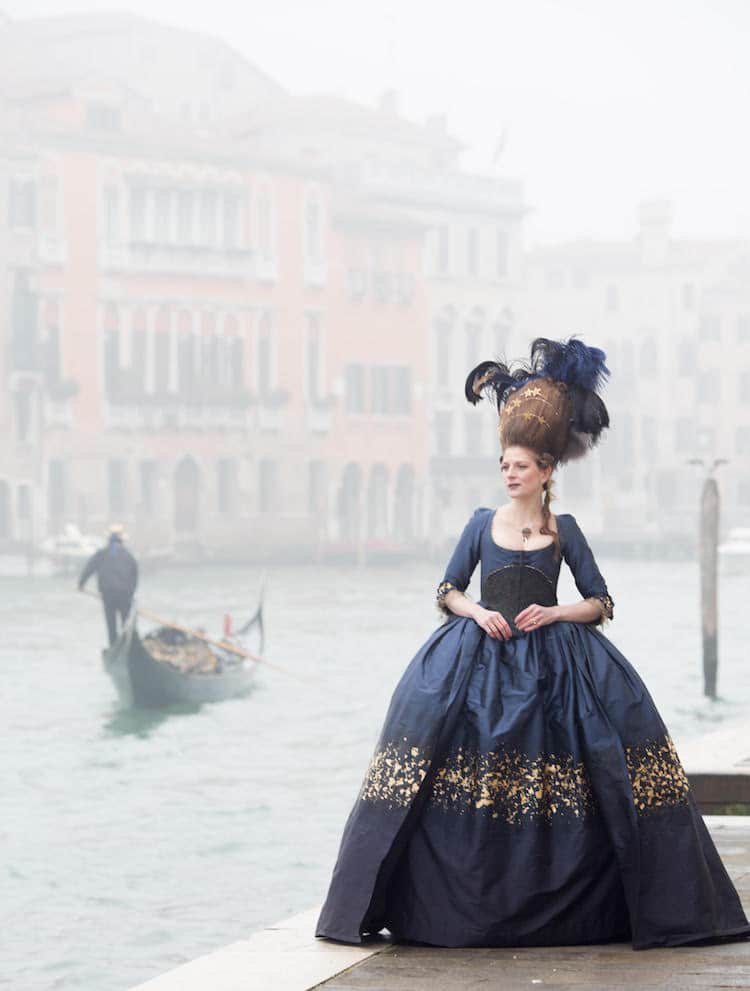
Photo: Phillip Van Nostrand
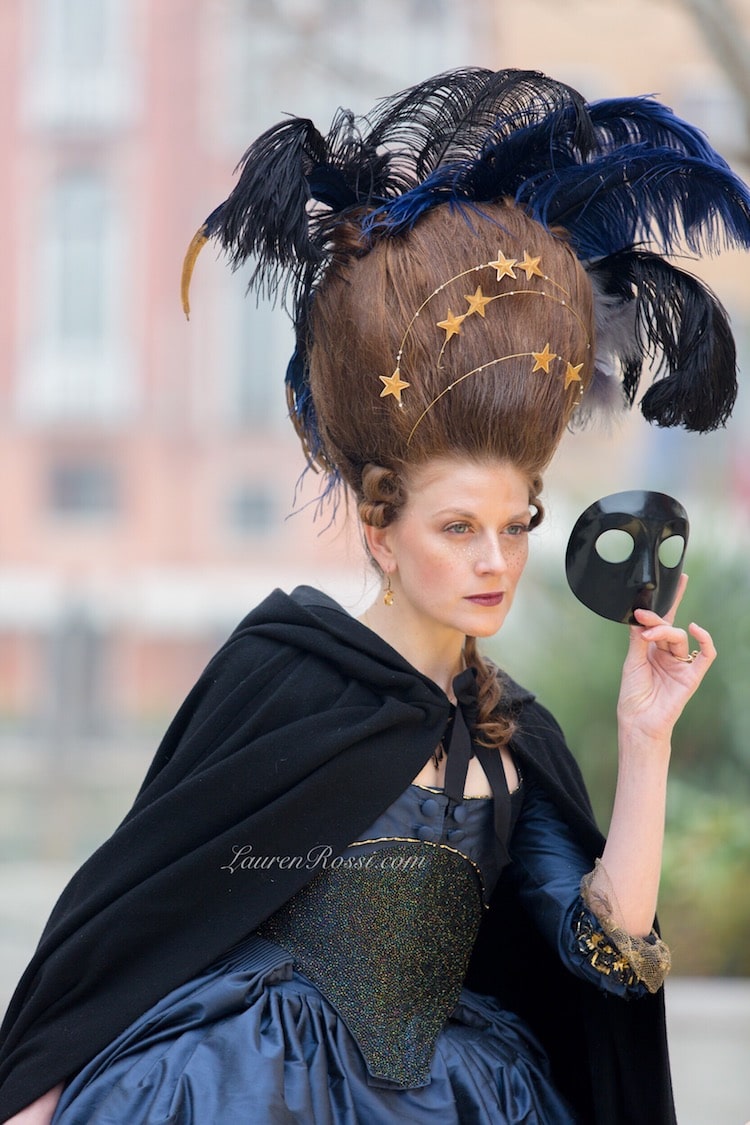
Photo: Phillip Van Nostrand
Do you have formal training in garment construction?
I have formal training in costuming but much of what I do now is self-taught. I earned a BFA in costume design and did a year of a masters degree in the same before deciding to pursue dual masters in another field. I credit college with giving me exposure to the basics of many things. In school, we experimented with millinery, dye work, draping and pattern drafting.
Any scholastic program is only a starting point and from there it was up to me to decide how deeply I would take those initial introductions. I am most grateful to my costume design professor who challenged me to really “see” when studying how clothes are constructed and for his encouragement to risk failure. As an artist, it can be hard to try something that I either don’t have the skills for or just may not work.
Today—I am constantly learning new techniques and processes—in fact, that is often what guides the inspiration for my work. This summer, for example, I was very interested in learning how to replicate the feel of Art Deco era lingerie. Lingerie from the 20s and 30s is simultaneously delicate and simple yet sturdy and intricate. It is not something I often see replicated in modern pieces. My challenge for myself was to replicate that feel while maintaining my own aesthetic. My personal study took me as far as reading original sewing books from the period to studying extant garments I’m fortunate enough to own. During the process—some of what I learned included hand hemstitch, how to hand tie silk fringe and hand apply lace to silk, different embroidery stitches and even how to recreate a raffia wig. It is wonderful knowing that I now have these additional skills to use for future projects.
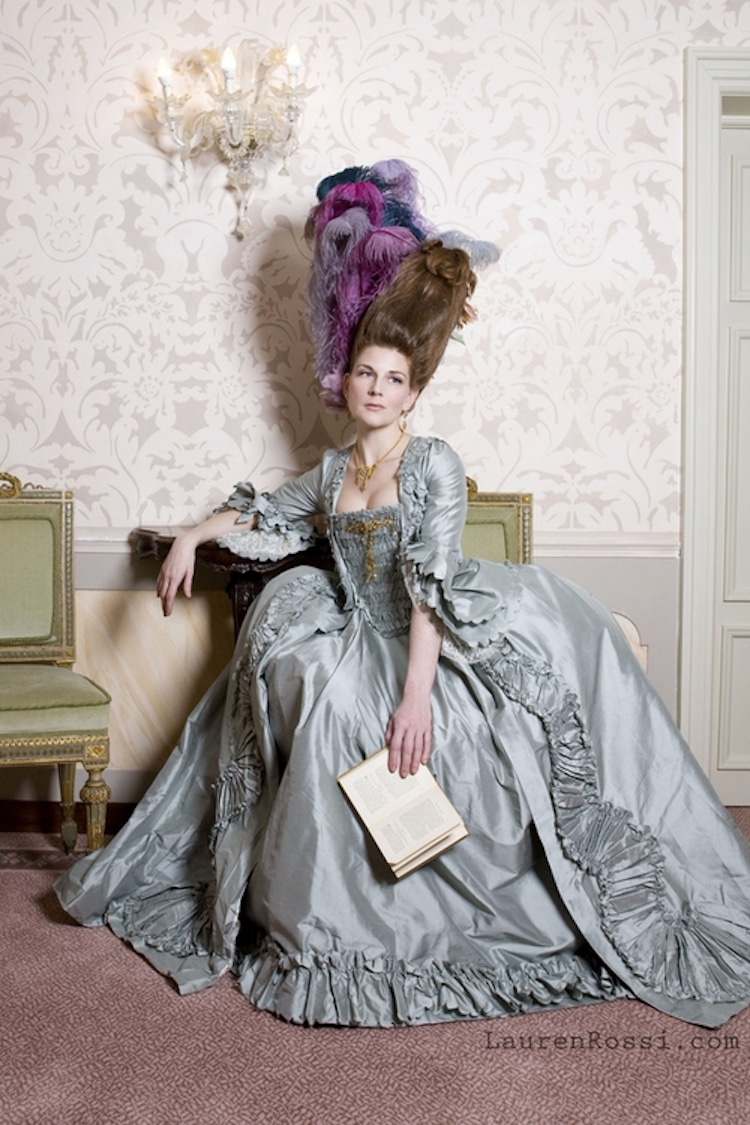
Photo: Aimee Dodds
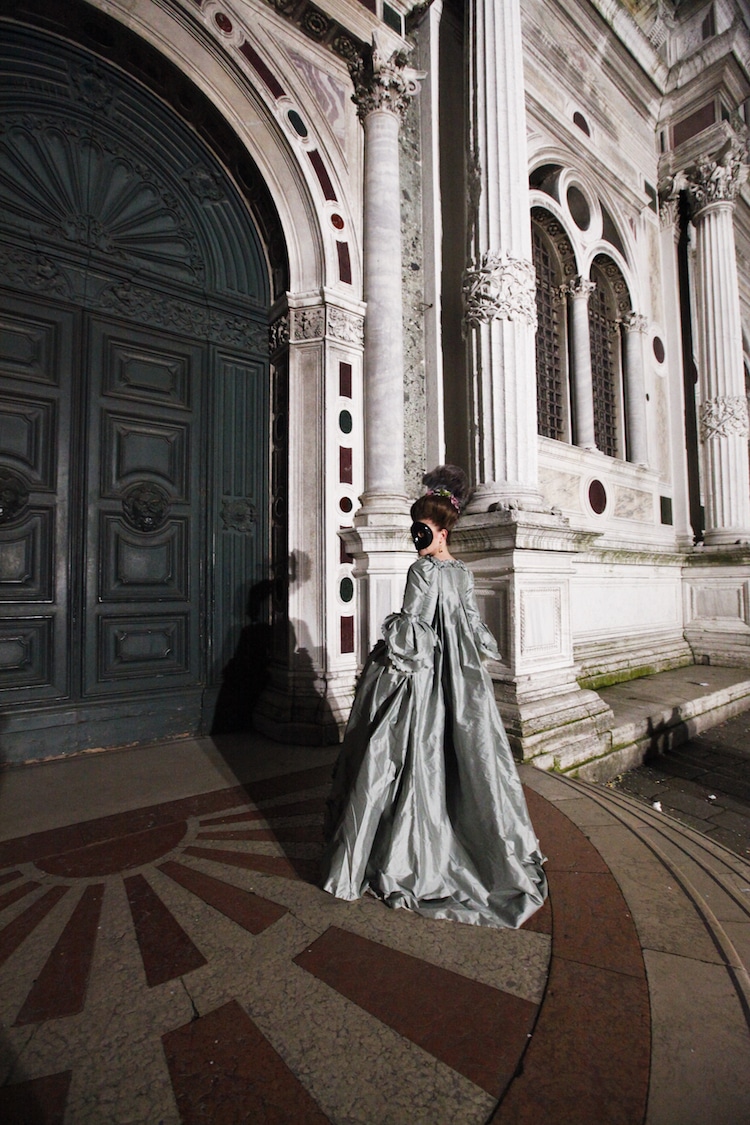
Photo: Aimee Dodds
How has wearing historical-inspired clothing changed the way you live?
Wearing historical clothing has not changed how I live so much as how I feel. It helps me feel in tune with the past yet because it is an active learning process—I am always looking forward.
Aside from clothing, are there other aspects of your life that you choose to have a historical bend?
While I enjoy “in dress” outings and events with my friends, overall my life is not historical. I am far more interested in the apparel and textiles of the past than I am in recreating the lifestyle. I live in NYC and work in a modern office environment. What I try to emulate from the past is how much they valued and respected objects in their world. Craftsmanship was at a high level and textiles were not disposable. Dresses were repaired, rebuilt, and reused. Heirlooms of all kinds were passed from generation to generation. I think this is the positive side of materialism and I want to buy and create items that will be loved in the future.
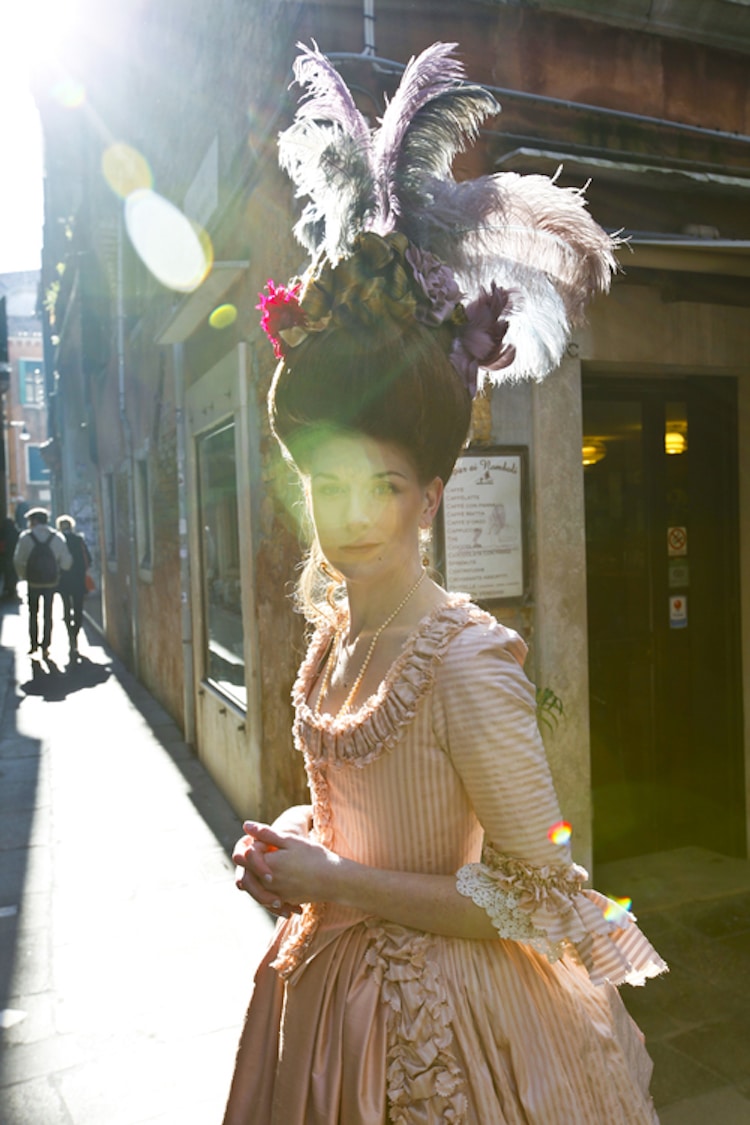
Photo: Aimee Dodds
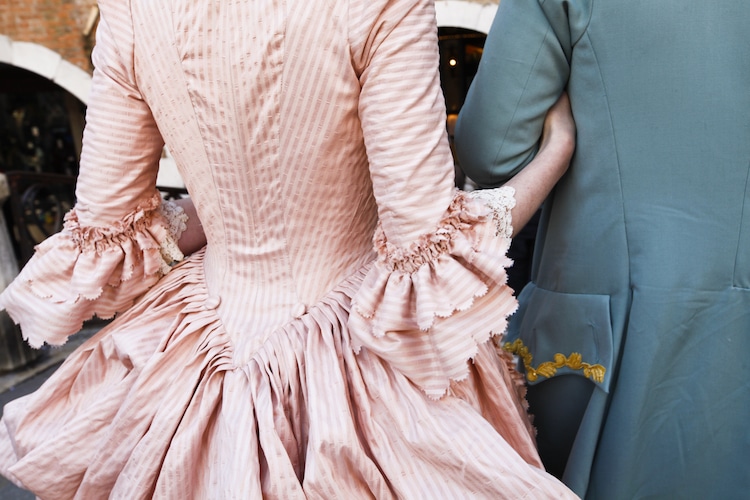
Photo: Aimee Dodds
What is your favorite piece you’ve made? Can you describe what went into making this garment?
It is difficult for me to choose a favorite piece and each one represents a different part of my journey. That said, I am rather proud of my 18th century stays. Although unseen when worn, they are the foundation for my dresses and without them, nothing would fit properly. It is important to me that the insides and inner layers of my work are as well made and lovely as that which you do see.
To create the pattern I studied a pair of original 18th century stays that are in my collection. I drafted the pattern and made 5 mockups before I was happy with the fit. The stays are entirely sewn by hand, comprising two layers of linen and one layer of silk. The hand sewing took about three months and was most often done during my commute on the NYC subway. They are boned with cane (wood) that has been individually hand cut and filed. They are bound with leather that I dyed. Handbound eyelets complete the lacing portion in back. I love how they are a modern cousin to the original I based them on.
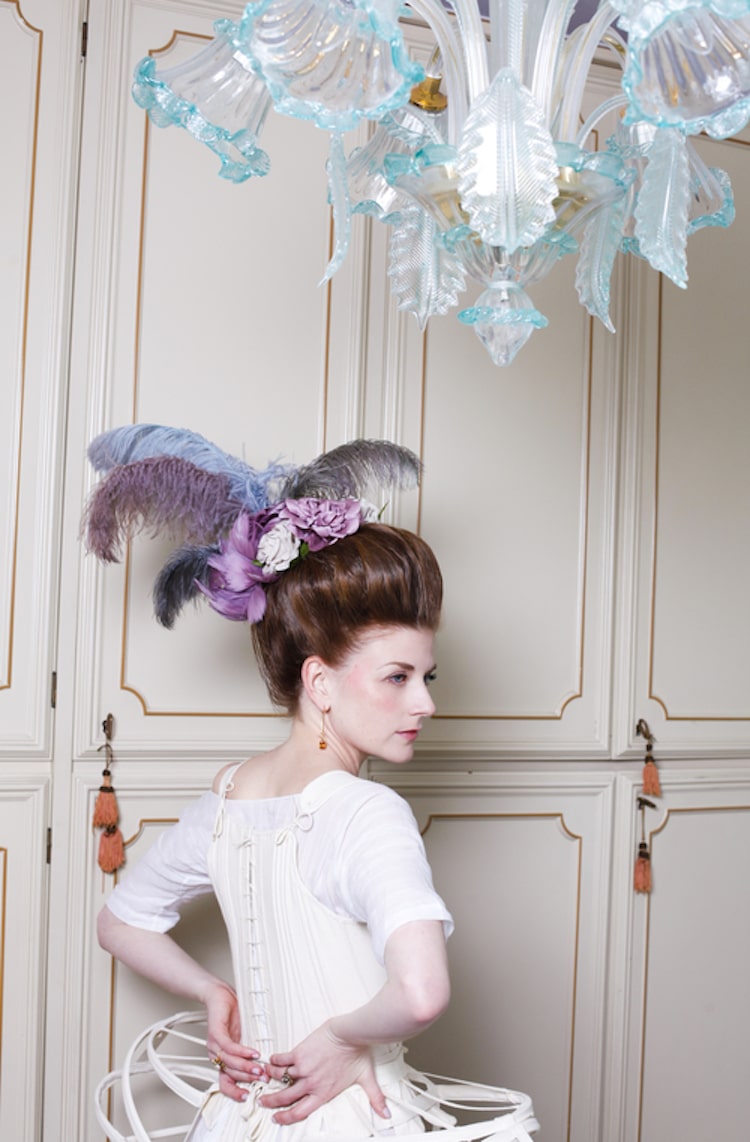
Photo: Aimee Dodds
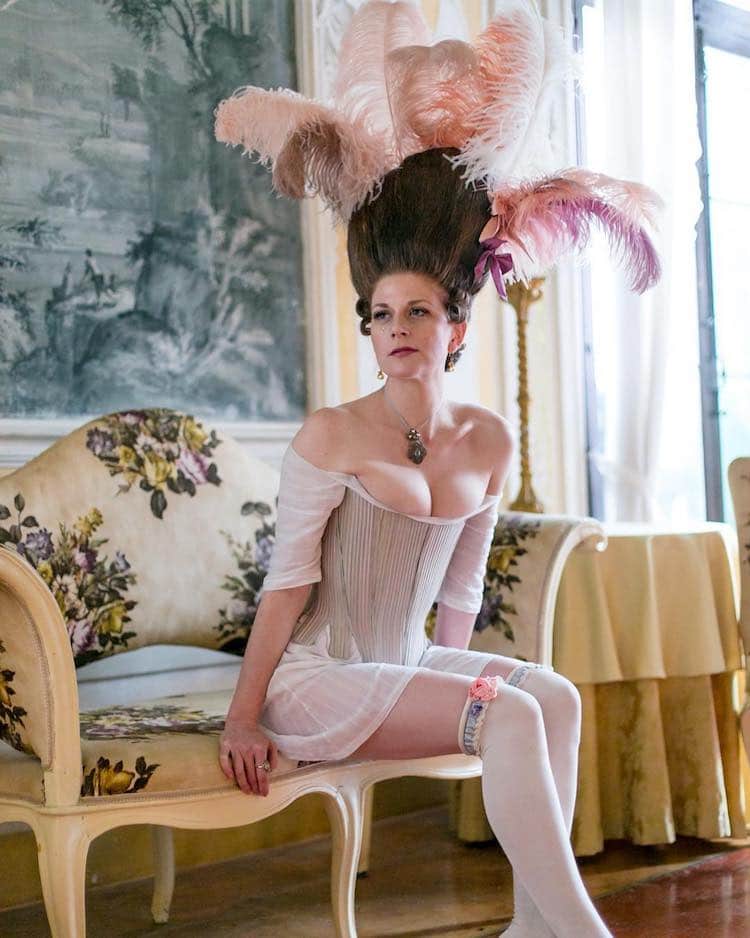
Photo: Phillip Van Nostrand
Where do you find your fabrics and patterns?
I buy most of my fabrics in the ever-shrinking NYC garment district. I very much enjoy digging through unsorted piles and racks of fabrics and seeing what speaks to me. Often I will buy up a bolt of fabric in anticipation of a yet unknown future project. I consider patterns to be tools and will use whatever source will give me the effect I want. I will drape, draft, enlarge patterns from texts, use original patterns from a period, study original garments and reference modern patterns. For me, the secret of the pattern is in the fit. I have been known to make three to four mockups to get it as close to where I want it to be.
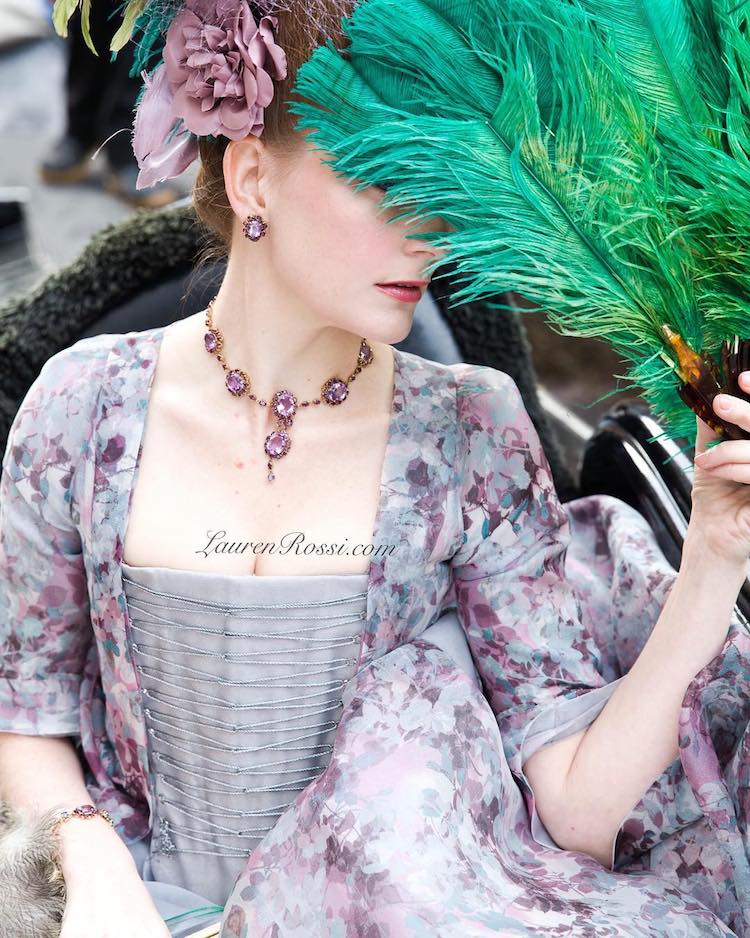
Photo: Aimee Dodds
What is it like to venture into our modern world wearing this exquisite attire?
Period clothes in a modern world give you a different perspective of space. You can really see how our clothes—and theirs—were built around their world. I notice unexpected things such as when wearing a corset (stays) it is more comfortable to sit in on a hard chair than a soft one. The soft one envelopes the body too much and makes it difficult to retain the proper posture.
I also have to be mindful of doorways, dirt and all my movements as the dresses only allow a very limited range of motion. I find my actions to be more controlled and feminine, my posture to be better and overall it slows my pace so I can appreciate what I see around me. I also have to make allowances with my work that can adjust to my world. My panniers (hoops), for example, are made with built-in hinges so I can pack them up for travel or fold them up to sit in a modern car or chair.
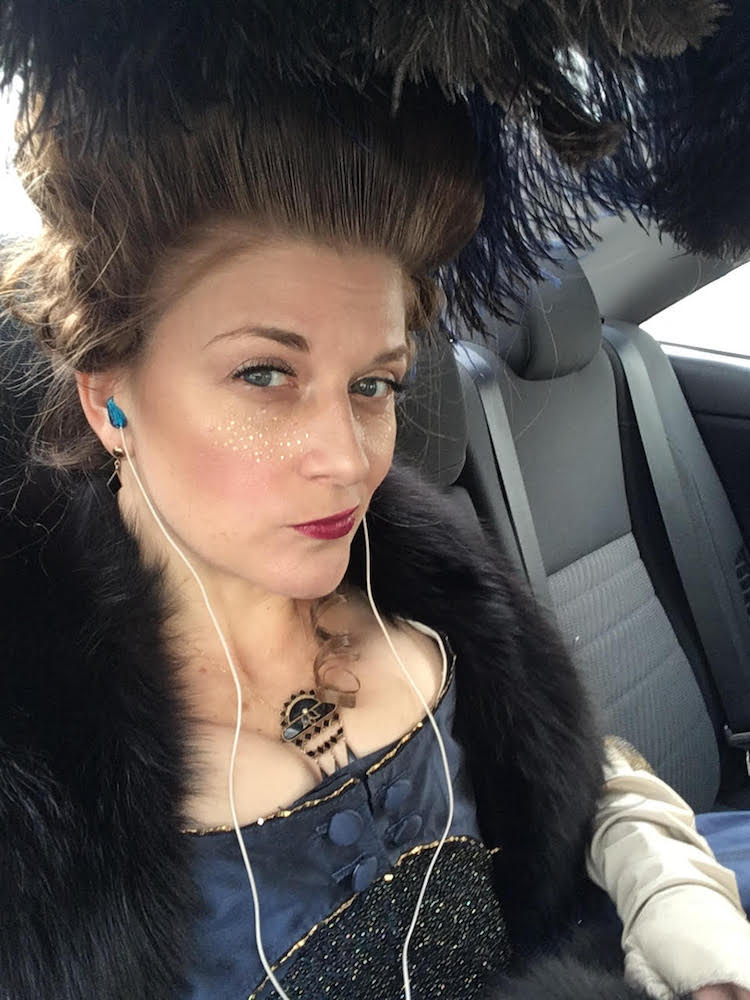
Photo: Lauren Rossi
Lauren Rossi: Website | Instagram | Facebook
My Modern Met granted permission to use photos by Lauren Rossi.
Related Articles:
Funny Photos Give the Illusion of Historical Paintings Snapping Selfies
Artists Recreate Elaborate Baroque Wigs Entirely Out of Paper
Over 83,500 Vintage Sewing Patterns Are Now Available Online
11 Modern Women Who Travel Through Time With Their Vintage Fashion
